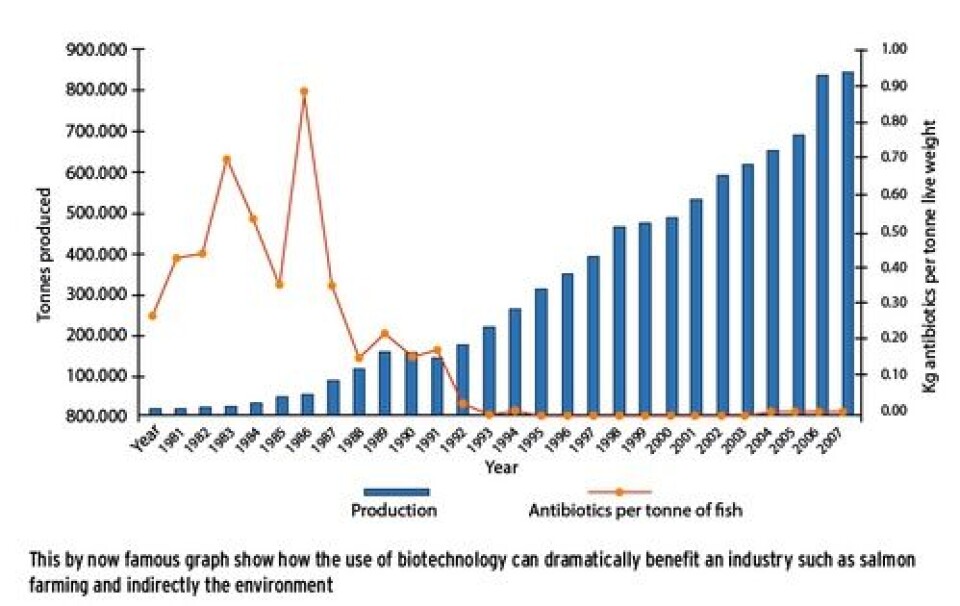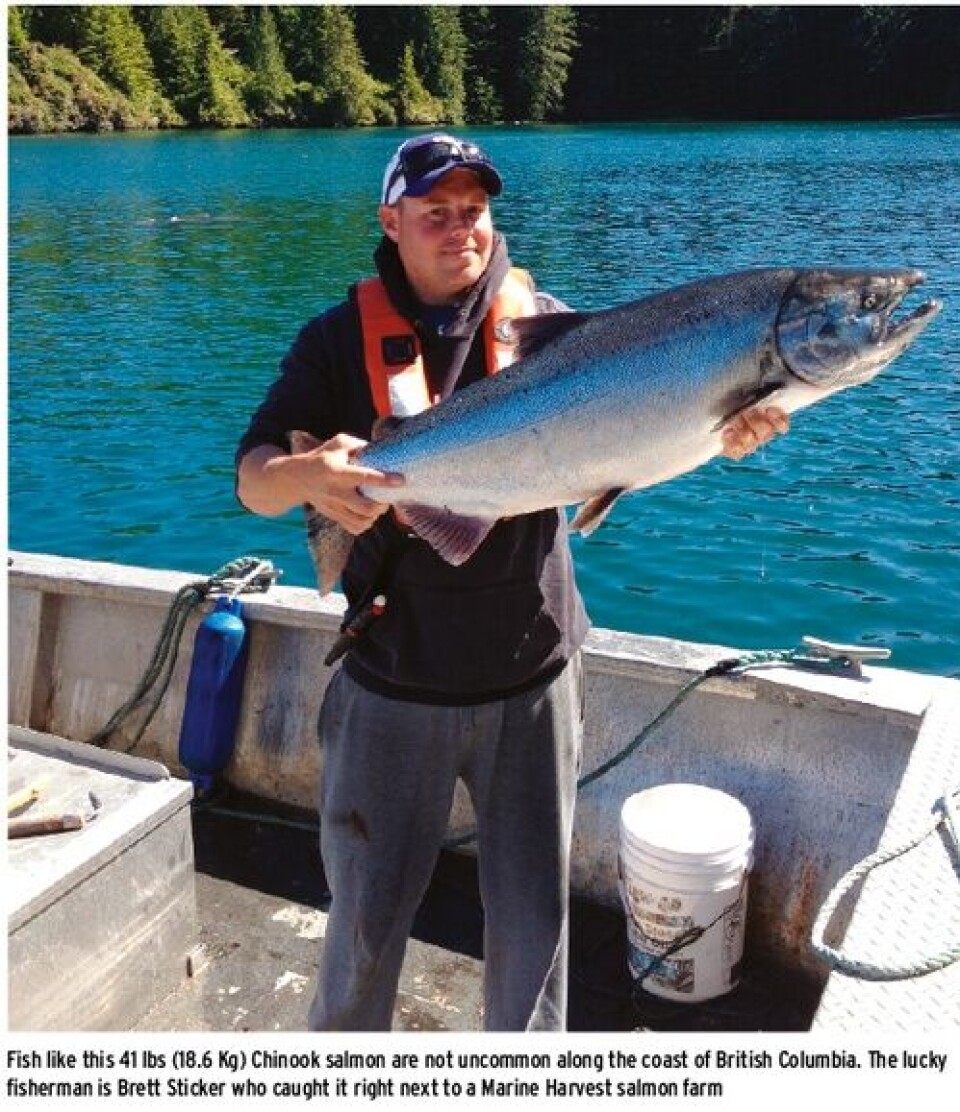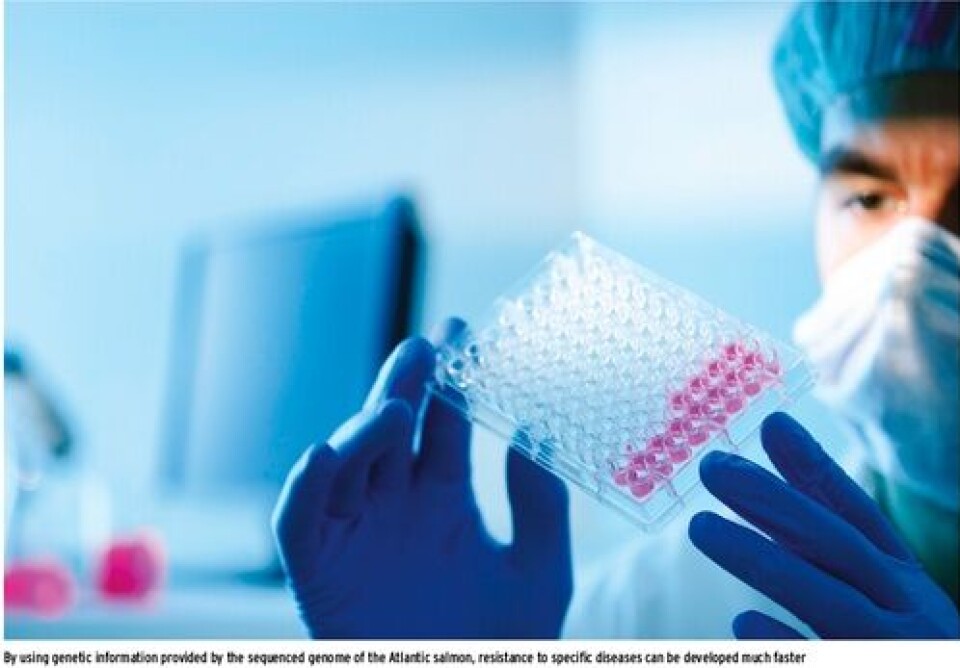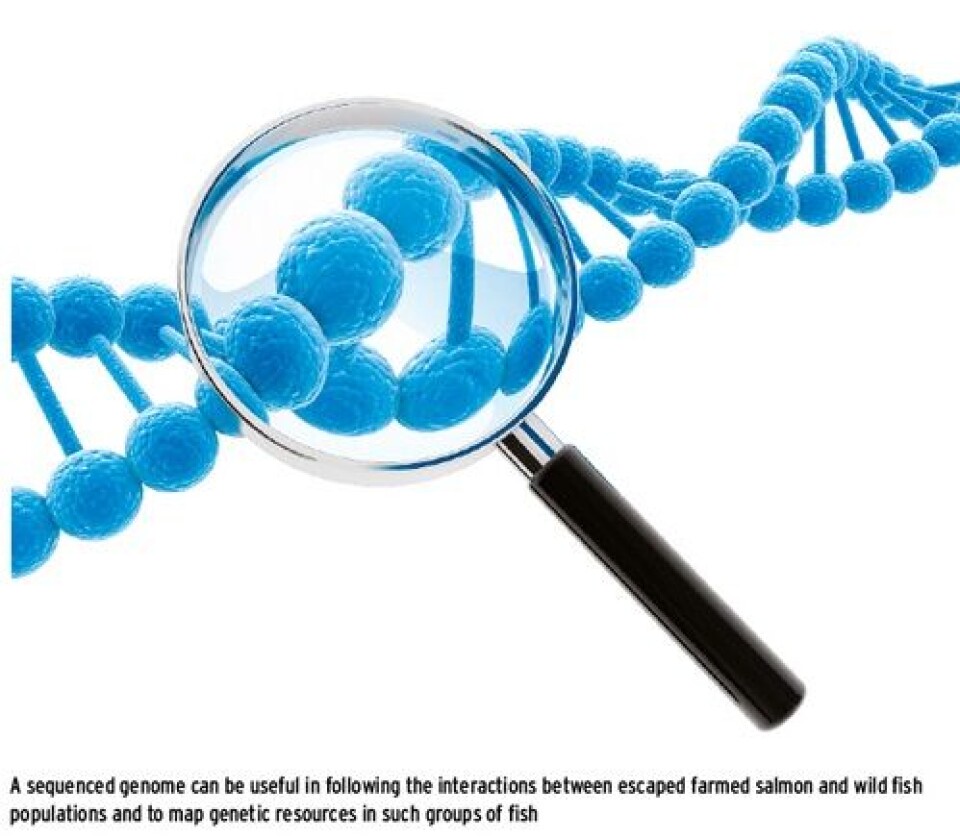Salmon Scientists will gather in Canada this Summer
Odd Grydeland odd@fishfarmingxpert.com
The 1st International Conference on Integrated Salmonid Biology (ICISB) was held in Oslo, Norway in 2012, with the intent “to provide a forum to discuss recent developments and future plans for salmonid biology and genomics”. That meeting was held to mark the release of the first draft sequence of the Atlantic salmon genome. Two hundred scientists and representatives of the salmon aquaculture industry from around the world discussed the opportunities and challenges associated with the establishment of this resource. Both the 2012 and this year’s conferences were initiated and made possible through the support of the International Cooperation to Sequence the Atlantic Salmon Genome (ICSASG), which was established in 2009 in order to oversee and provide funding for the sequencing effort. Initiated by Canadian scientists and The Centre for Integrative Genetics (CIGENE) at the Norwegian University of Life Sciences in Ås, Norway, the ICSASG is now comprised of both public and private member organizations from Canada, Chile and Norway.

Participants at the Oslo ICISB were quick to point out that although the mapping of the Atlantic salmon genome will allow for the improvement of breeding programs in commercial aquaculture, the use of such biotechnology should not be mistaken for “genetic modification of organisms” (GMO). And for readers that- like myself- doesn’t have a scientific background, a genome is essentially the entire genetic information content of an organism. And when we hear that a “genome has been sequenced”, it means that the sequence of all the base pairs (A, T, C, and G) that make up the DNA of that organism have been determined. The ICSASG was tasked with producing a genome sequence that identifies and physically maps all genes in the Atlantic salmon genome and that can act as a reference sequence for other salmonids. This is possible since all these fish- from Atlantic and Pacific salmon to Brook trout- are closely related (93-96% identical).
As an example of what can be achieved through the application of biotechnology, Petter Arnesen of Marine Harvest told delegates to the 1st ICISB conference that;
• Salmon of today use 25% less feed than offspring of wild salmon • Growth rate (of farmed salmon) has been more than doubled (time to harvest reduced from around 40 to 20 months) • The use of antibiotics in the Norwegian salmon farming industry dropped from almost a kilo per tonne fish produced in the mid-1980’s to almost zero by 1995, while at the same time production increased from less than 100,000 tonnes per year to over 800,000 tonnes

Mr. Arnesen also told the conference that the importance of breeding will increase in the future as new genetic tools such as the Atlantic salmon genome become available. This first of a multi- phase sequencing project was carried out with an ICSASG investment of about US$ 6 million (~€ 4 million at the time of the announcement- December 08, 2009). Parties to the project are:
• From Canada: Genome British Columbia • From Chile: InnovaChile through CORFO- The Chilean Economic Development Agency • Norway: FHF- The Norwegian Seafood Research Fund and The Research Council of Norway
Some of the research challenges discussed in Oslo that the sequencing project could potentially assist with are: • The needs for the development of new vaccines and also increased resistance to diseases through breeding • The needs for new, non-medicinal treatments for sea lice and the development of increasingly resistant strains of salmon- also through breeding • The development of new, non-marine sources of raw materials for fish feed- especially materials high in Omega-3 fatty acids
The initiative is unique in as much as it brings together interested parties from both the commercial salmon farming sector as well as managers of wild fish stocks and people from the conservation segment of society- all of whom will be able to apply the findings of this research for their own particular purpose. Some of the applications of the sequenced salmon genome will be the management of wild fish stocks, food security and traceability, conservation of populations at risk and broodstock selection for commercially important traits. One of the basic principles behind the initiative to sequence the Atlantic salmon genome has been to make the information available to not only the participating countries, but to all interested researchers, industry and the public at large. This strategy will also avoid any attempts being made to try to patent all or parts of the salmon genome According to the organizers, the 2014 ICISB conference will present presentations and posters from academia and industry that will offer important insights into the latest knowledge and challenges in the following areas:
• The sequencing and biological implications of the Atlantic salmon genome • Genomes of related salmonid species • Breeding, QTL mapping and genomic selection & traceability • Physiology, nutrition and interaction with pathogens • Environmental and conservation biology of wild salmonids • Life history, molecular ecology and evolution of salmonids The two main Canadian scientists that have been involved with the ICSASG from the beginning are William S. Davidson from the Simon Fraser University in Vancouver (Department of Molecular Biology and Biochemistry) and Ben Koop from the University of Victoria (Centre for Biomedical Research). They were two of the nine authors of a 2010 paper simply entitled “Sequencing the genome of the Atlantic salmon (Salmo salar)” which outlines the sequencing process. Some of the other authors were Rodrigo Vidal from the University of Santiago in Chile and Inge Jonassen from the University of Bergen, Norway. Ben Koop told FishfarmingXpert that there is relatively little activity in British Columbia’s aquaculture industry with respect to making active use of the information provided through the salmon genome sequencing project compared with other salmon farming regions like Norway, Chile, Scotland and others. He attributed this to the historically unstable investment climate in this region due to the lack of stable political support for the salmon farming industry as well as the seemingly missing “social licence” that is more commonly enjoyed in other countries. The situation is better on Canada’s east coast he said, where companies like Cooke Aquaculture is making active use of the newfound information.

In an e-mail interview with FishfarmingXpert, Technical Director for AquaGen, Ms. Nina Santi said that there is an increasing level of understanding of the importance of using new technology and information such as the sequencing of the salmon genome for the benefit of the salmon aquaculture industry. Although not directly related to the sequencing project, fish farmers in Europe have seen the benefit of using biotechnology to reduce the losses to not only bacterial diseases such as furunculosis, but also to disease outbreaks caused by virus. Ms. Santi said that by using a genetic marker described as IPN QTL in the selection of fish with a higher resistance to IPN, outbreaks of this disease in Norwegian aquaculture was reduced from 222 in 2009 to 50 in 2013. She also said that attempts to improve the resistance in salmon to the ISA virus using gene markers alone have proven to be difficult. AquaGen’s main selection criteria is aimed at increasing the growth rate of the salmon, thus shortening the time the fish has to spend in sea cages. This improves the economic returns to the fish farmer, makes better use of feed resources and helps to keep the pressure from sea lice at a lower level, Ms. Santi said. The company has in recent times put more emphasis on the selection for resistance to sea lice- an area where genomic selection using thousands of gene markers- is being used to calculate breeding values. The potential for the use of genomic resources is equally important when it comes to the management of wild fish, Ms. Santi said. It is important for the fish farmers to support such activities in order to get a better basic understanding of for example the effects of escaped farmed salmon. She explained that AquaGen is a research partner in a NOK 40 million (~€4.9 million) project “The AquaGenome Project” that will- among else- sequence the genome of 1,000 Atlantic salmon and 1,000 Atlantic cod. This will assist in the mapping of the genetic variation among these species- work that will be fundamental in subsequent studies of for example environmental adaptation of the species in nature during periods of changes to climates and environments. The funding for this 3-year project was provided by the Norwegian Research Council through a new BioTek2012 program.
In an interview with FishfarmingXpert, Mr. Kjell Maroni - R&D Director for aquaculture at the Norwegian Seafood Research Fund- said that the results from the sequencing of the Atlantic salmon genome are also being used at the Sea Lice Research Center at the University of Bergen. This work might lead to the development of a vaccine to be used to protect farmed salmon against this parasite. Mr. Maroni also suggested that this new sequence will be extremely important for work with both wild and farmed salmon, and that the work with breeding salmon that is resistant to specific diseases will now show much faster results.

Steinar Bergseth from the Research Council of Norway is the chair of the international ICSASG working group, whose contribution to the project from Norway totals approximately NOK 50 million (~€5.9 million) so far. Dr. Bergseth said in an e-mail that there are four Norwegian companies that are providing financial support for the sequencing program- AquaGen, Cermaq, Marine Harvest and Salmobreed. Other companies making active use of the new knowledge in Norway are vaccine suppliers, the feed company EWOS and Lerøy Seafood, among others. Mr. Bergseth, Mr. Maroni and others all work to assist industry players and academia to initiate additional projects that are based on information from the sequencing of the salmon genome, Dr. Bergseth said. This will require resources additional to the substantial funding already available for R&D activities undertaken by Norwegian companies and academia.
The latest version of the Atlantic salmon genome is now published by Genbank at the National Centre for Biotechnology Information: http://www.ncbi.nlm.nih.gov/
In February last year (2013), the Norwegian Seafood Research Fund issued a report (in Norwegian) that is a description of how the mapping of the (Atlantic) salmon genome can contribute to resolving the challenges in Norwegian aquaculture. Here are some of the most notable parts of the report’s Summary:
The salmon genome has now been sequenced and assembled. The knowledge of the salmon genome structure and gene function will be important for solving challenges in salmon aquaculture. In order to fully take advantage from this knowledge, long term investment and strategy are needed. This evaluation is an analysis of how the salmon genome information, in broad sense, can be used for future development of Norwegian aquaculture.

• The aim of the salmon genome sequencing has been to generate a high quality reference sequence, to verify all salmon genes (including possible proteins), gene organisation and regulation. A reference sequence is also important for mapping genetic variation. • Sequencing of the salmon genome, knowledge of gene expression, proteins and their interaction (systems biology) create a new and better toolbox for: o More efficient breeding, - using knowledge based selection for specific traits o Better control with biological production, - by using markers that predict the physiological status of the fish. o Developing fish nutrition, - by utilizing alternative feed resources o Fight diseases and improve fish health, - by using markers for pathogens and immune response. • A sequenced salmon genome is also useful for aquaculture management, i.e. to follow interactions of escaped farmed salmon with wild populations and to map genetic resources in wild populations. • To implement knowledge about the salmon genome quickly and efficiently, it will be beneficial to establish a national framework in form of a research platform similar to the zebrafish community. • A common research platform: o Should develop a database “Salmon base” for storage and systematisation of gene activity data and connect this to genome structure, genetic variation and biological processes o Contribute to strengthen and improve research groups o Should include projects using the zebrafish model o Would connect various research projects and be a common meeting place for research, industry and management. • One should stimulate to update the aquaculture, fish health, fish nutrition and fish biology education to include more bioinformatics and system biology.






















































